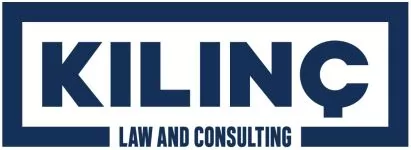INTRODUCTION
Article 7 (seven) of Act No. 4054 on the Protection of Competition ("Law No. 4054") prohibits mergers and acquisitions that result in a permanent change in control with a significant lessening of effective competition within a market for goods or services in the entirety or a portion of the country, particularly in the form of creating or strengthening a dominant position. Communiqué No. 2010/4 on Concerning the Mergers and Acquisitions Calling for the Authorization of the Competition Board ("Communiqué") regulates which types of mergers and acquisitions are subject to the authorization of the Competition Board ("Board") for legal validity.
THE CONCEPT OF MERGERS & ACQUISITIONS
Under Article 5 (five) of the Communiqué, the following transactions, which are carried out in a way to bring about a permanent change in control, shall be deemed as merger or acquisition transactions within the scope of Article 7 (seven) of Law No. 4054.
- a) the merger of two or more undertakings, or;
- b) the acquisition of direct or indirect control over all or part of one or more undertakings, whether by one or more undertakings or by one or more persons who currently control at least one undertaking, through the purchase of shares or assets, through a contract or any other means.
In this context, it should be noted that there are some differences between the concept of merger and acquisition set forth by the Turkish Commercial Code No. 6102 ("TCC") and the concept of merger and acquisition enacted by Law No. 4054. Indeed, whereas the likelihood of a merger of X Holding and its subsidiaries Y and Z in which are controlled by X Holding, under the title of "YZ company", or the possible acquisition of Z undertaking by Y, legally constitutes a merger or acquisition within the scope of the TCC; conversely, under competition law different elements of the transaction shall be taken into account. Since Y and Z are under the control of X Holding as subsidiaries, they do not carry out their economic activities independently and the merger under the title of "YZ company" does not create a permanent change in the control structure as a result of the transaction. Hence, this transaction does not constitute a merger or acquisition transaction within the scope of competition law. For this reason, merger and acquisition transactions within the scope of Law No. 4054 cannot be mentioned in transactions where there is no permanent change in control.
On the other hand, within the scope of Law No. 4054, if a transaction considered as a merger and acquisition to be realized in a way to bring about a permanent change in control and exceeds the turnover thresholds outlined in Article 7 (seven) of the Communiqué, the relevant transaction shall be subject to the authorization of the Board and shall only be valid with the Board's authorization.
THE CONCEPT OF CONTROL UNDER COMPETITION LAW
Under Communiqué, control may be established through rights, contracts, or other instruments that, separately or jointly, enable the undertaking to exercise of a decisive influence over another undertaking, either de facto or de jure. These instruments include, in particular, ownership of all or part of the assets of an undertaking, a right to exploit the assets of an undertaking, or rights or contracts that give the undertaking the ability to exercise a decisive influence over the composition of its bodies or its decisions.
Control may be exercised by the holders of rights or by persons or undertakings who are authorized to exercise rights under a contract or who, although not having such rights or authorization, have the actual power to exercise such rights.
In this context, the essential component in the determination of mergers and acquisitions is the occurrence of a permanent change in the control of the undertaking.
INSTRUMENTS PROVIDING CONTROL IN CASES DEEMED AS MERGERS AND ACQUISITIONS
Establishing Control Through the Acquisition of Shares or Assets
In practice, the most common type of transaction to establish control is the acquisition of shares or assets. Similarly, joint control may also be established through the establishment of a joint venture by more than one undertaking. The shareholding agreements signed between the undertakings and the provisions regulated in these agreements are crucial in determining the control. Because, even if the shareholding rate of an undertaking in a joint venture is low, the rights granted by the shareholding agreement (such as veto rights, right to appoint the management bodies, etc.) may be effective for the relevant joint venture party to exercise control over the joint venture company.
Establishing Control Through Contract
It is legally possible to acquire control of all or part of one or more undertakings through contracts. In this sense, some contracts may be considered merger or acquisition transactions within the scope of Law No. 4054.
Contracts with a duration of five years or more that are characterized as long-term by the Board, and which contain only controlling transaction provisions may result in a structural change in the relevant market. Examples of such agreements are lease agreements that give the transferee control over management and resources without transferring ownership rights or shares.
In its precedents, the Board considers long-term lease agreements, which are concluded to operate under the control of another undertaking without the acquisition of any company, as merger and acquisition transactions within the scope of the Communiqué. In other words, long-term transactions that lead to a change of control, such as the acquisition of the business/operating rights of an undertaking or the change of control of the right to use its assets or the transfer or lease of its licenses are considered as a transfer of control by the Board, and these transactions mostly considered as an "acquisition".
The Board does not draw any importance to the type or nature of the agreement in the "acquisition" listed above and emphasizes the regulation of the relevant rights for the establishment of control or joint control and the change of control of an asset or an operating right.
Other Tools Providing Control
Another control instrument taken into account by the Board is the conclusion of long-term contracts relating to an operation that is material to the undertaking's activity, in other words, the establishment of economic ties. In such a case, the Board analyses whether economic ties, in combination with other ties, are sufficient to lead to a permanent change of control.
CONCLUSION
Merger and acquisition transactions within the scope of Law No. 4054 are not limited to transactions such as the transfer of shares or transfer of assets; as the long-term leases, contracts for the change of control of an undertaking or an income-generating activity, licensing rights or contracts leading change of control regarding the use of asset rights are also considered by the Board within the scope of merger and acquisition. In this respect, in merger and acquisition transactions, the Board first examines whether the transaction results in a change of control of the undertaking concerned.
In cases where it is determined that a change of control has occurred and the transaction is qualified as a merger and acquisition, Board evaluates whether the turnover of the relevant undertakings exceeds the turnover thresholds outlined in the Communiqué. If it is determined as a result of this assessment that the turnover thresholds are exceeded, in order for the transaction to gain validity the Board must authorize the transaction for the relevant merger transaction.
Under Law No. 4054, if it is determined that a merger and acquisition transaction subject to authorization is not notified to the Board, an administrative fine is imposed on the undertaking obliged to notify under Law No. 4054.
The content of this article is intended to provide a general guide to the subject matter. Specialist advice should be sought about your specific circumstances.




